In this article:
Aloe vera has been used for centuries in Egypt, Greece, India, China, Japan, and Mexico for its health-promoting properties. It is a succulent plant with long, fleshy, broad, thick leaves, with a gel-like sap at the center.
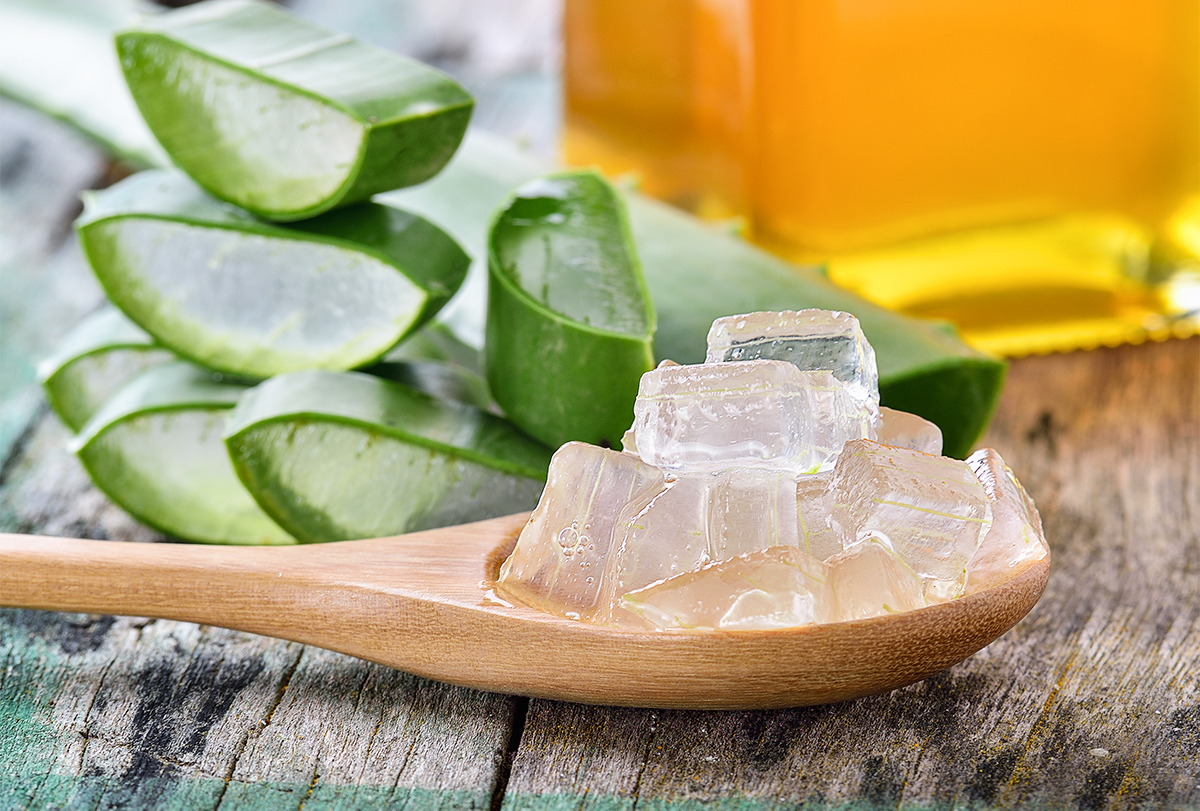
Aloe vera contains vitamins, minerals, lignin, enzymes, sugars, saponins, amino acids, and salicylic acid, most of which are present in the gel. (1) Aloe vera may be consumed as a potent drink in the form of a juice or smoothie to reap its benefits.
Health Benefits of Aloe Vera
Aloe vera has been shown to possess medicinal properties, which have been studied extensively in clinical studies.
- Multiple studies suggest aloe vera may have a therapeutic role in irritable bowel syndrome (IBS). (2)(3)(4)
- Aloe vera, in combination with acne medication, may help resolve acne. (5)
- Topical aloe vera gel has been shown to treat thermal burns just as well as or better than some medications. (6)
- The plant has also been shown to possess wound healing, antiviral, anti-inflammatory, and immunomodulatory properties. (7)(8)
- Various studies suggest that the oral administration of aloe vera may help decrease blood glucose levels, HbA1c, and cholesterol levels in individuals with prediabetes and type 2 diabetes. However, the most efficient dosage or administration type is not yet determined. (9)(10)(11)
- Some studies suggest aloe vera may be used as a potent treatment for dental problems such as lichen planus, (12) oral submucous fibrosis, (13) recurrent aphthous stomatitis, alveolar osteitis, periodontitis, (14) gingivitis, (15) and other conditions. (16)
Recipes to Make Aloe Vera Drinks at Home
Aloe vera juice has multiple potential health benefits and can be conveniently made at home by adding to juices or smoothies.
1. Aloe vera orange juice

Oranges are a good source of vitamin C and fiber, and they pair well with aloe vera. Here’s a simple recipe for fresh aloe vera orange juice.
Ingredients:
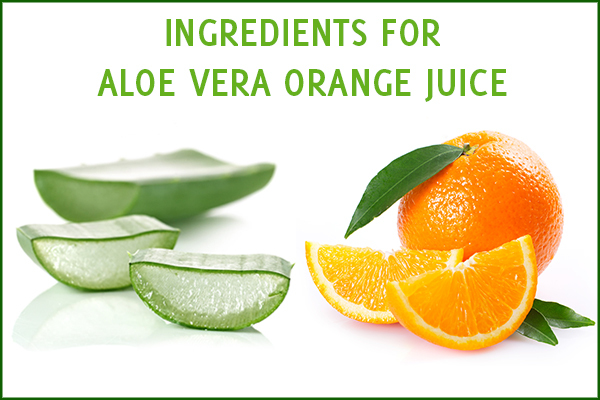
- 2 tablespoons aloe vera gel (about one leaf)
- 3 whole oranges (peeled)
- Water (optional)
Directions:
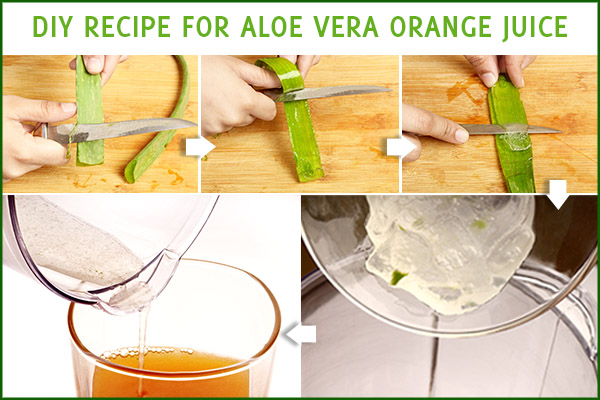
- Cut the sides of the aloe vera leaf and slit the top layer along the length to reveal the gel.
- Scoop or peel out the gel from the inside of the leaf.
- Measure 2 tablespoons of the gel and put it in the blender.
- Blend to obtain a thin consistency.
- Juice the oranges.
- Add 1 cup of fresh orange juice to the aloe vera gel.
- Blend for approximately 1 minute and serve.
2. Aloe vera smoothie
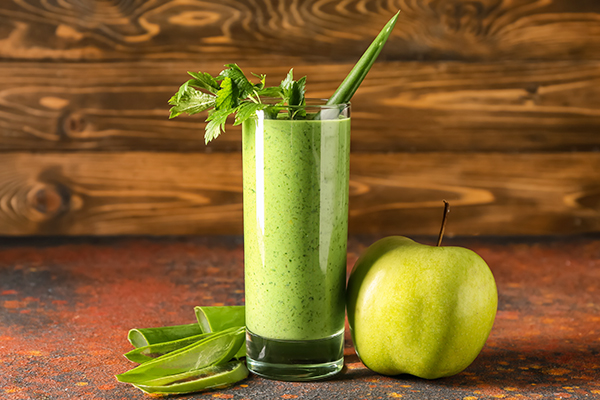
Here is a delicious and nutritious smoothie recipe that combines various fruits and ground flaxseeds to enhance the taste and nutrition of aloe vera.
Ingredients:
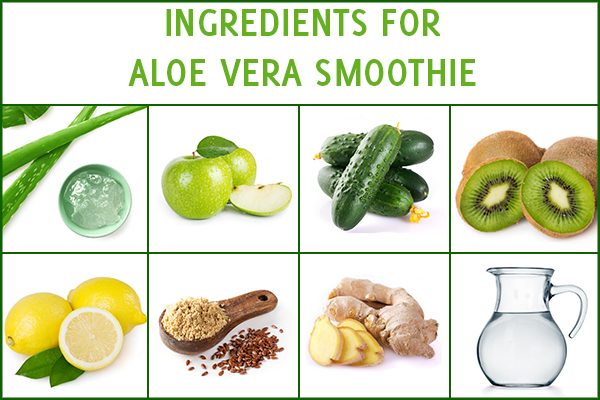
- ½ cup fresh aloe gel
- Half a green apple
- Half a cucumber
- 1 kiwi
- Half a lemon
- 1 tablespoon ground flaxseeds
- ½ inch fresh ginger
- ½ cup of water
- Honey (optional, to taste)
Directions:
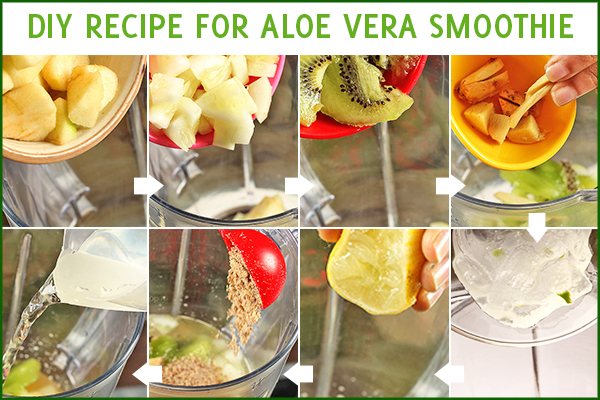
- Chop half a green apple, half a cucumber, and one kiwi into small chunks and put them in the blender.
- Add a small piece of ginger and blend until incorporated.
- Add ½ cup of aloe vera gel, the juice of half a lemon, 1 tablespoon of ground flaxseeds, and a cup of water in the blender.
- Blend for a few minutes until a smooth consistency is achieved and serve.
Additional Tips
- Check whether the aloe vera you are using is suitable for internal consumption. If it is meant for external use only, do not make the juice with it.
- Give the aloe vera leaf a thorough wash before extracting the gel.
- You may use ½ teaspoon of dried ginger if you are out of fresh ginger for the smoothie.
- You may replace drinking water with coconut water to boost the nutritional content of the smoothie.
- If flaxseeds are not available, you may use chia seeds soaked in water instead.
- Consume the smoothie immediately as it may start losing color if left for long.
Uses of Aloe Vera
Aloe vera extracts are popular worldwide and a substantial part of botanical industries. The plant extracts are employed in various commercial enterprises, including:
1. Topical cosmetic industry
Aloe vera is used as a base material of:
- Moisturizers
- Soaps
- Shampoos
- Makeup creams
- Perfumes
- Sun lotions
- Shaving creams
- Bath aids
2. Food industry
Aloe vera is primarily used in the production of functional foods, especially drinks.
3. Pharmaceutical industry
Aloe vera is used as a bitter agent for:
- Gels and ointments (topical application)
- Tablets and capsules (oral use)
Side Effects of Aloe Vera
Although generally good for health, aloe vera consumption may have a few side effects, including:
- Diarrhea
- Abdominal pain and cramps
- Potassium depletion
- Muscle weakness in some individuals
- An allergic reaction such as hives and skin irritation
It is recommended to consult your doctor before taking aloe vera or any aloe vera supplements, as the plant can interfere with the action of certain medications.
Caution: Individuals with gastrointestinal problems, cardiovascular disease, hemorrhoids, or kidney disease may need to avoid the use of aloe vera. Pregnant or breastfeeding women should also refrain from consuming aloe vera.
Should Aloe Vera Latex Be Consumed?
Aloe vera juice is often available in its processed, decolorized form, which is made using an activated charcoal treatment to remove the latex.
The latex is removed as it contains phenolic compounds, including anthraquinones and glycosides, that are believed to have hyperplastic and cancerous activities, although the studies on this topic were done on animal models and the results were non-conclusive. (17)(18)(19)
It is still best to choose decolorized whole-leaf aloe vera juice and avoid its non-decolorized counterpart since its safety is not yet determined.
Final Word
Aloe vera gel is a viscous and sticky flesh of the plant leaf. It is often proclaimed as a treatment for various health issues, ranging from acne to digestive problems. Aloe vera juice may be added in moderation to your everyday diet to reap its health benefits. It is recommended to consult your doctor before consuming aloe vera.
- Was this article helpful?
- YES, THANKS!NOT REALLY


